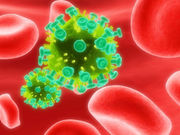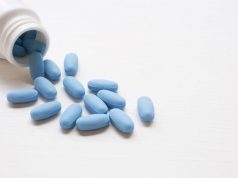Achieving UNAIDS 90-90-90 target would be effective and cost-effective over five, 10 years
TUESDAY, May 31, 2016 (HealthDay News) — Achieving the Joint United Nations Program on HIV/AIDS (UNAIDS) 90-90-90 target strategy would be effective and cost-effective in South Africa, according to a study published online May 30 in the Annals of Internal Medicine.
Using a microsimulation model, Rochelle P. Walensky, M.D., M.P.H., from Massachusetts General Hospital in Boston, and colleagues estimated the clinical and economic value of reaching 73 percent virologic suppression among HIV-infected persons in South Africa by 2020. The design comprised modeling the current pace strategy (gradual increase in overall virologic suppression from 24 to 36 percent in five years) and the UNAIDS target strategy (simulates 73 percent virologic suppression in five years).
The researchers found that over five years the UNAIDS target strategy would prevent 873,000 HIV transmissions, 1,174,000 deaths, and 726,000 maternal orphans, resulting in 3,002,000 life-years saved. Over 10 years, 2,051,000 HIV transmissions, 2,478,000 deaths, and 1,689,000 maternal orphans would be prevented, while 13,340,000 life-years would be saved. Over five and 10 years, the additional budget required for the UNAIDS target strategy would be $7.965 billion and $15.979 billion, respectively, yielding incremental cost-effectiveness ratios of $2,720 and $1,260, respectively, per life-year saved.
“Reaching the 90-90-90 HIV suppression target would be costly but very effective and cost-effective in South Africa,” the authors write.
Full Text (subscription or payment may be required)
Copyright © 2016 HealthDay. All rights reserved.








